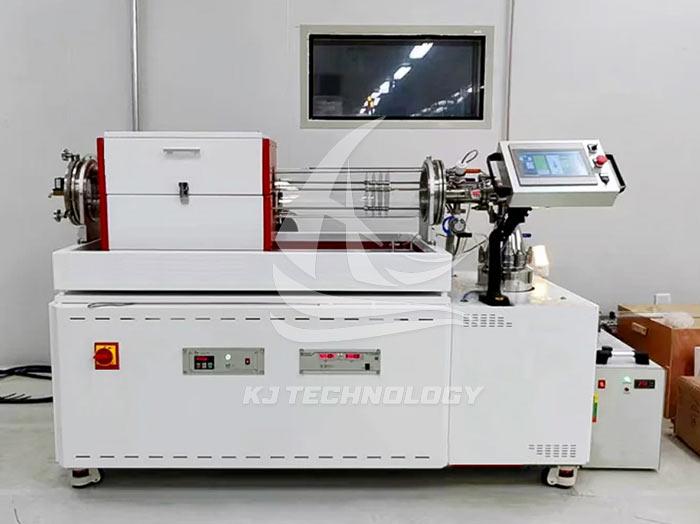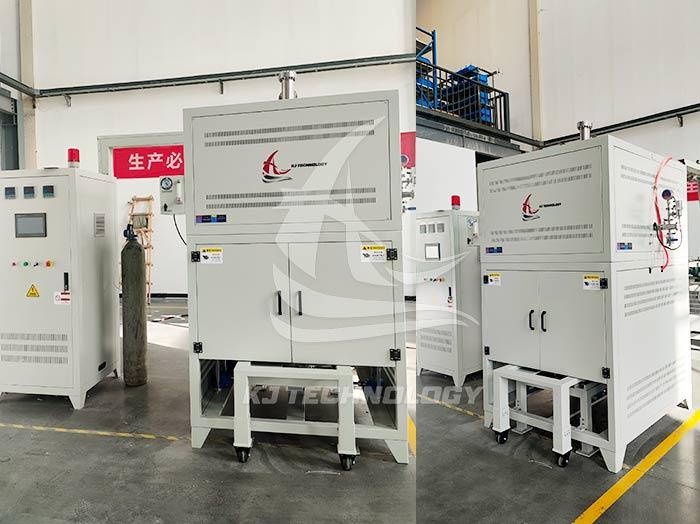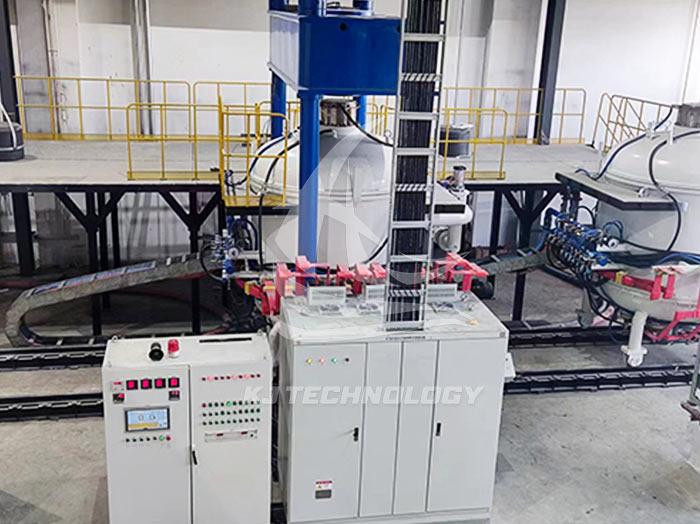What are the advantages of vacuum furnace annealing?
 10-10-2025 Author: KJ technology
10-10-2025 Author: KJ technology
Vacuum furnace annealing, as an advanced heat treatment process, has significant advantages in the field of material processing. Its core advantages are reflected in four aspects: optimization of material properties, improvement of process quality, expansion of application scope, and environmental protection and energy saving. The specific details are as follows:
1. Prevent oxidation and decarburization to ensure surface quality
Non oxidative annealing
The vacuum environment (usually with a vacuum degree of 10 ⁻²~10 ⁻⁴ Pa) effectively isolates oxygen and prevents metals from reacting with oxygen at high temperatures. For example, during annealing of stainless steel, there will be no formation of oxide scale on the surface, maintaining smoothness, reducing subsequent pickling or polishing processes, and reducing material loss.
Inhibit decarbonization phenomenon
For steel grades with high carbon content (such as tool steel and bearing steel), a vacuum environment can prevent carbon atoms from diffusing to the surface and combining with oxygen to generate CO ₂, thereby avoiding the hardness decrease caused by surface decarburization.
2. Optimize the internal organization of materials and enhance overall performance
Eliminate residual stress
Vacuum annealing effectively releases residual stresses generated during material processing (such as casting, forging, welding) through uniform heating and slow cooling. For example, after vacuum annealing, the residual stress of aviation aluminum alloy components can be reduced, significantly improving their fatigue resistance.
Improve grain structure
Under vacuum conditions, the diffusion of material atoms is more uniform, which is conducive to the formation of small and uniform grain structures. For example, after vacuum annealing, the grain size of titanium alloys can be refined, improving their strength and toughness.
Reduce the risk of hydrogen embrittlement
A vacuum environment can reduce the hydrogen partial pressure inside the furnace, promoting the escape of hydrogen atoms from the material. For high-strength steel (such as 30CrMnSiA), the hydrogen content decreases after vacuum annealing, effectively preventing delayed fracture caused by hydrogen embrittlement.
3. Accurately control process parameters to improve product consistency
temperature uniformity
The vacuum furnace adopts radiation heating combined with a stirring fan, and the temperature difference inside the furnace can be controlled within ± 3 ℃.
Controllability of atmosphere
It can be filled with high-purity inert gas (such as argon) or reactive gas (such as nitrogen) to meet specific process requirements. For example, annealing under nitrogen protection can form a surface nitride layer, improving wear resistance.
Process repeatability
Through the PID intelligent temperature control system, the process curve can be accurately reproduced. For example, after a certain enterprise adopted vacuum annealing technology, the product qualification rate increased and the performance fluctuations between batches were significantly reduced.
4. Expand application scope to meet high-end demands
Active metal treatment
Vacuum annealing is the only feasible solution for easily oxidizable metals such as magnesium, titanium, and zirconium. For example, medical titanium alloy implants must eliminate processing stress through vacuum annealing while maintaining a biocompatible surface.
Precision parts processing
Suitable for high-precision components such as semiconductor wafer carriers and optical lenses. Vacuum environment can avoid deformation caused by heat treatment and has high dimensional accuracy.
Composite material processing
Can handle composite materials such as metal ceramic and metal plastic. For example, after vacuum annealing, the interfacial bonding strength of carbon fiber reinforced aluminum based composite materials is improved.
5. Environmental protection and energy-saving advantages
Non polluting emissions
No need to use protective gas or quenching oil to avoid the discharge of exhaust gas and waste liquid.
High energy efficiency
The vacuum environment reduces heat convection losses and improves heating efficiency compared to air furnaces. For example, when processing workpieces from the same batch, the energy consumption of the vacuum furnace is reduced.
Typical application cases
Aerospace field
After vacuum annealing, the tensile strength at room temperature of a certain type of engine blade is improved, and the high-temperature endurance strength at 650 ℃ is increased, resulting in an extended service life.
Medical device industry
After vacuum annealing, orthopedic implants have reduced surface roughness, longer fatigue life, and are less prone to fracture, meeting FDA biocompatibility requirements.
semiconductor manufacturing
After vacuum annealing of wafer carriers, the flatness error is reduced and the carrier's service life is longer.








